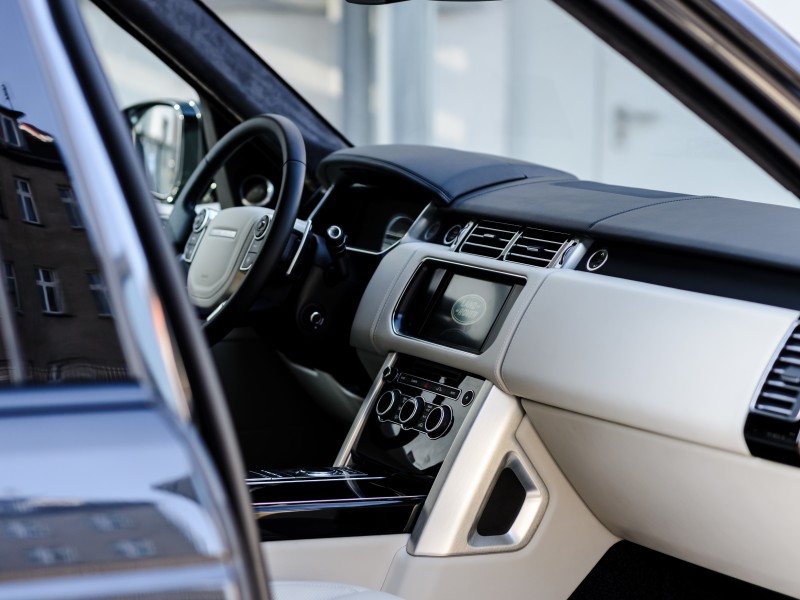An automatic transmission is a type of vehicle transmission that changes gears automatically as the vehicle moves without any manual input from the driver. Transmission systems, which includes automatic transmission allows the car engine, which turns at relatively high speed, to transmit a range of torque and speed outputs necessary for movement.
Your Range Rover’s Automatic transmission is a complex system made up of lots of moving parts. The major ones being the planetary gearset, torque converter, pump, bands, clutches, sensors, valve body, and the transmission fluid or ATF. These components all work as a unit to transmit torque to the wheels and provide motion.
Fortunately, your Range Rover’s automatic transmission gearbox is a sturdy unit and will last up to 200,000 miles if properly taken care of. Furthermore, it doesn’t require much maintenance. Routine maintenance which is recommended after 60,000 miles, only involves the change of the automatic transmission fluid (ATF) and filter. The transmission fluid is at the heart of an automatic transmission system. It provides fluid pressure for the torque converter and valve operations, lubricates and cools the transmission to prevent overheating. For optimal performance, it’s recommended you check the fluid level and quality every month and change the transmission fluid every 60,000 miles.
The transmission fluid is made up of a base oil mixed with chemical compounds that possess the desired ATF property. These additives are designed to offer qualities such as lubrication, anti-wear, detergent, rust and corrosion inhibition, kinematic viscosity and much more. With age, ATF breaks down and tends to become contaminated with particles worn off from the moving parts of the automatic gearbox and thus become less efficient. If left unchanged, the fluid will increasingly fail to keep the transmission cool and lubricated. And in the long run, damage it and lead to costlier gearbox rebuild or outright replacement.
To service the auto gearbox on your Range Rover, you must replace the transmission fluid as well as the sump pan. The reason for changing the pan is because it comes with the filter built-in right into the base. And a new filter goes with any fluid replacement in a vehicle to avoid contaminating the fresh fluid. The pan also incorporates two magnets to pick up metallic and composite materials that are produced from normal wear of the gears and other components. The magnet attracts and traps them to prevent them from moving through the system and causing damages.
The replacement sump pan comes in a large bag in a box and includes a small plastic bag which contains an O-ring for the pickup tube. It’s worth noting this here because the O-ring is small you might accidentally discard it.
Replacing the filter and transmission fluid is a relatively simple operation. Here’s a rundown on how to get it done.
Tools you’ll need.
A punch, Small hammer, Number 40 Torque Wrench, Long extension, 3/8 Ratchet, 3/8 Breaker Bar, Number 8 Allen Hex Socket, Number 10 Allen Hex Socket,drain pan, and Suction gun.
Step-by-step procedure
- 1. Drain out the transmission fluid. The car should be raised and adequately supported by jack stands. Start by taking the drain plug off. Locate the drain plug under the gearbox. Use the 10 mm Allen Hex Socket and cautiously remove the drain plug. Allow the transmission fluid to drain out. Ensure thedrain pan is correctly positioned to catch the draining fluid.
- 2. Remove the Sump Pan. Twenty-one bolts support the sump pan. Use the ratchet and the Number 8 Allen Hex socket to unscrew each of the twenty-one bolts starting from one corner. Since this might be the first time, they may need a tap or two with the punch and hammer to free them up before you can unscrew them. Support the pan with your hand when you get to the last bolt to avoid damaging the bolt.
- 3. Replace the pan. Unpack the new replacement pan. Remove the white cap on the pick-up tube. Look for the O-ring inside a small plastic bag in the packaging. Apply some transmission fluid to make it slide easily over the pick-up tube. Pick up the sump pan and align the bolt holes. Carefully pop-in the pick-up tube into place right next to the valve body.
- 4. Secure the pan. Replace all twenty-one bolts holding the pan in place. Then using the Allen Hex Socket with the ratchet, tighten the bolts. Bear in mind the maximum allowable torque on the bolts should be 8 newtons.
- 5. Remove the fill plug. Locate the fill plug. Unscrew it using a short 8mm Allen Hex Socket with a breaker bar. Since the plug has been sitting there for a while, it will require a breaker bar and possibly all your weight behind it to break it loose. A ratchet might slip and possibly injure you in the process.
- 6. Fill the pan. You may need about 4 quarts of transmission fluid to fill the pan. Use the suction gun and slowly fill the pan through the fill opening to the point where it starts to drip out.
- 7. Bring down the vehicle, start the engine and let it idle. This will allow the fluid heat up to 85 to 105 Fahrenheit which is the full operating temperature of the transmission fluid. If you have an analyzer, use it to determine when the temperature of the fluid is in the proper range. Otherwise, just let the engine idle for about 10 to 15 minutes to get it in that temperature range.
- 8. Add more automatic fluid. Raise the vehicle again with the engine still running and top off the fluid in the pan to get it to maximum fill level. Allow the fluid to flow out in a steady stream from the fill opening. Wait for a few minutes for the stream to slow to a trickle and then to a drop or two. That indicates the fluid is at the proper level.
- 9. Replace the fill plug and tighten it.
- 10. Wipe off any excess fluid and you are done.






2 comments